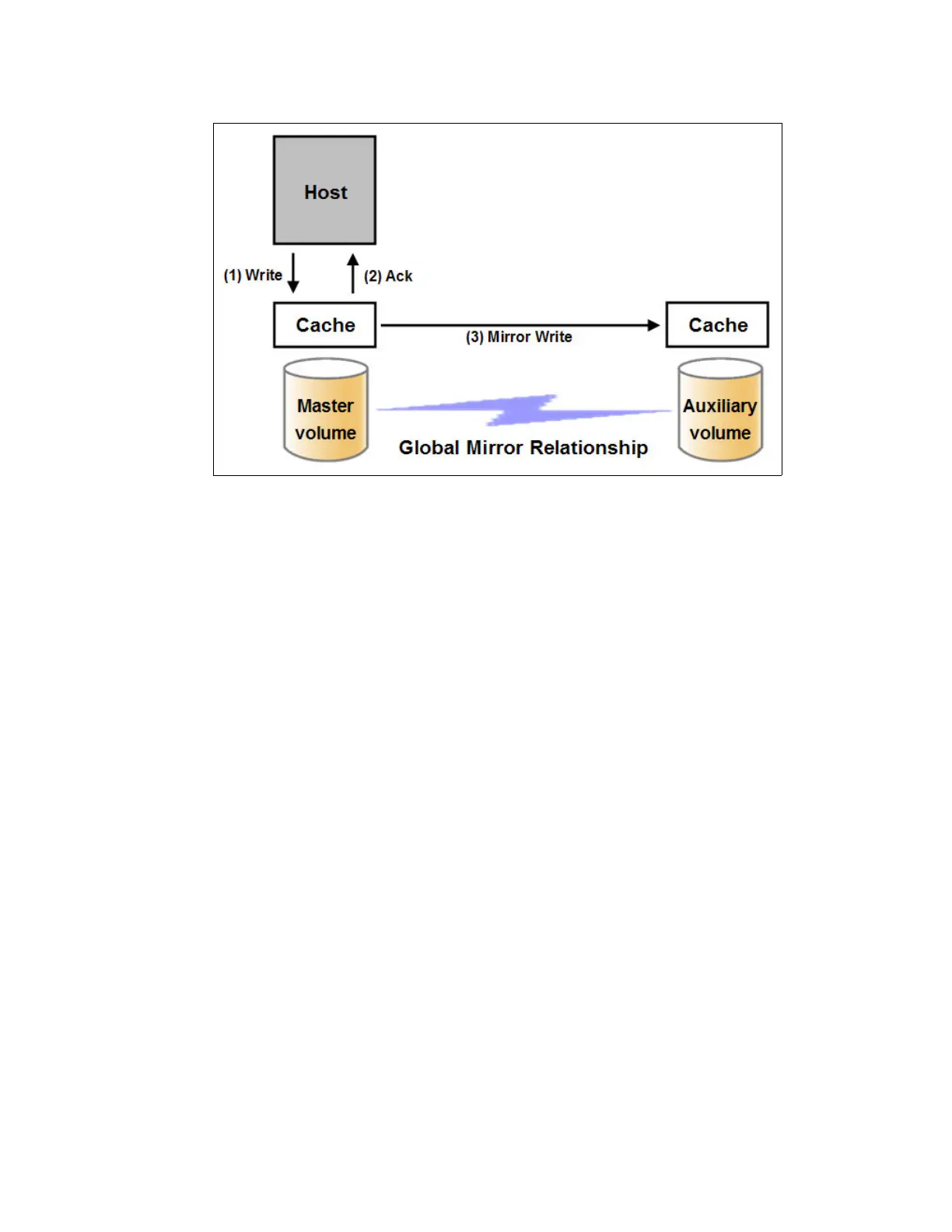Chapter 10. Copy services 569
Figure 10-81 Global Mirror write sequence
The Global Mirror algorithms maintain a consistent image on the auxiliary always. They
achieve this consistent image by identifying sets of I/Os that are active concurrently at the
master, assigning an order to those sets, and applying those sets of I/Os in the assigned
order at the secondary. As a result, Global Mirror maintains the features of Write Ordering
and Read Stability.
The multiple I/Os within a single set are applied concurrently. The process that marshals the
sequential sets of I/Os operates at the secondary system. Therefore, the process is not
subject to the latency of the long-distance link. These two elements of the protocol ensure
that the throughput of the total system can be grown by increasing system size while
maintaining consistency across a growing data set.
Global Mirror write I/O from production system to a secondary system requires serialization
and sequence-tagging before being sent across the network to a remote site (to maintain a
write-order consistent copy of data).
To avoid affecting the production site, IBM Spectrum Virtualize supports more parallelism in
processing and managing Global Mirror writes on the secondary system by using the
following methods:
Secondary system nodes store replication writes in new redundant non-volatile cache
Cache content details are shared between nodes
Cache content details are batched together to make node-to-node latency less of an issue
Nodes intelligently apply these batches in parallel as soon as possible
Nodes internally manage and optimize Global Mirror secondary write I/O processing
In a failover scenario where the secondary site must become the master source of data,
certain updates might be missing at the secondary site. Therefore, any applications that use
this data must have an external mechanism for recovering the missing updates and
reapplying them; for example, a transaction log replay.
Global Mirror is supported over FC, FC over IP (FCIP), FC over Ethernet (FCoE), and native
IP connections. The maximum supported round-trip latency between sites depends on the
type of partnership between systems, the version of software, and the system hardware that
is used.

